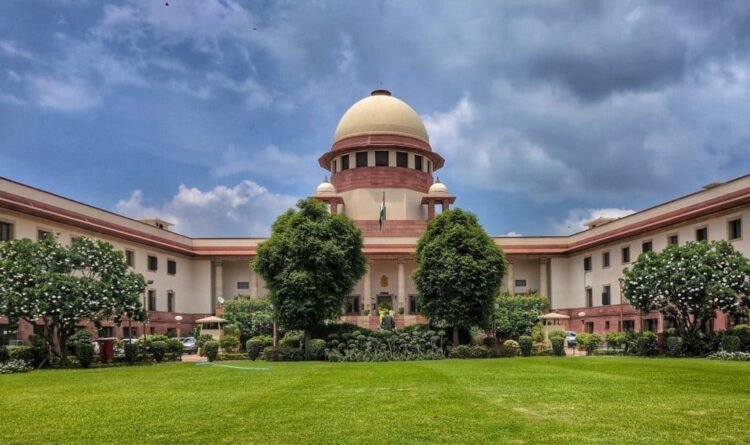Seven Judges Write Six Separate Opinions on the Issue of Reservation
NEW DELHI (India CSR): In a landmark decision with far-reaching political implications, seven Supreme Court judges wrote six different opinions on the issue of sub-classifying Scheduled Castes (SC) for reservations. Experts believe this is a significant ruling in the context of reservation policies in India.
Background of the Case
In 1975, the Punjab government reserved 25% of jobs and college seats for Valmiki and Mazhabi Sikh castes within the Scheduled Castes category. This was struck down by the High Court in 2006, based on a 2004 Supreme Court ruling that sub-categorization within Scheduled Castes is not permissible. The Supreme Court had also stated that states do not have the authority to alter the President’s list of Scheduled Castes.
Andhra Pradesh had implemented a similar law, which was also declared invalid by the Supreme Court. In response, the Punjab government enacted a new law prioritizing these two castes for half of the SC reservations. This law was again struck down by the High Court.
The case eventually reached a seven-judge bench of the Supreme Court, which on August 1 overturned the 2004 decision.
Chief Justice D.Y. Chandrachud’s Opinion
Chief Justice D.Y. Chandrachud, writing for himself and Justice Manoj Mishra, stated that Scheduled Castes are not a homogeneous group. He noted that certain castes, such as those involved in manual scavenging, are more disadvantaged than others within the SC category.
He emphasized that sub-classification should be based on data, not political gain, and that governments must show that lack of representation is due to backwardness. Sub-classification decisions can also be subject to judicial review.
Impact and Reactions
Four other judges concurred with the Chief Justice but wrote their own opinions. Justice B.R. Gavai stated that the government cannot grant the entire reservation to a single sub-group.
The Punjab government argued that not all castes within the Scheduled Castes category are equal, a stance supported by the central government, which also favored allowing sub-classification.
Currently, sub-classification exists within Other Backward Classes (OBC) reservations. This ruling could lead to similar sub-classifications within SC and Scheduled Tribes (ST) reservations, provided states can present adequate data.
Political analysts believe this decision will impact Dalit votes. Subhajit Naskar, Assistant Professor at Jadavpur University, suggested that sub-classification could lead to political fragmentation within the SC-ST community, potentially benefiting parties like the BJP, which supported sub-classification in court.
State-level political parties might also implement sub-classification to their advantage.
However, Naskar disagreed with the decision, stating, “Reservation for Scheduled Castes is based on untouchability. Sub-classification is not permissible. This decision will see strong opposition in the coming days.”
Creamy Layer Considerations
Prakash Ambedkar, President of Vanchit Bahujan Aghadi, also opposed the decision on social media, arguing that it violates the fundamental right to equality. He questioned the basis for determining backwardness.
Four judges expressed their views on the introduction of a creamy layer within SC and ST reservations. The creamy layer concept refers to the economically and socially advanced members of a community who are ineligible for reservations.
Justice B.R. Gavai suggested that a creamy layer should be applied to SC and ST reservations, similar to OBC reservations, but did not specify how it should be determined. Two other judges agreed, while Justice Pankaj Mithal opined that if one generation has benefited from reservation and progressed, future generations should not receive it.
However, these comments were observations and are not binding on future cases. The creamy layer issue was not directly before the court. Currently, the creamy layer principle applies to OBC reservations and promotions within SC and ST categories.
You Learn
The Supreme Court’s decision to allow sub-classification within Scheduled Castes marks a significant shift in reservation policy. While it aims to address disparities within the SC community, it also raises concerns about potential political manipulation and the criteria for determining backwardness. The decision’s political and social ramifications will unfold in the coming days as stakeholders and communities respond to this historic ruling.
(India CSR)






